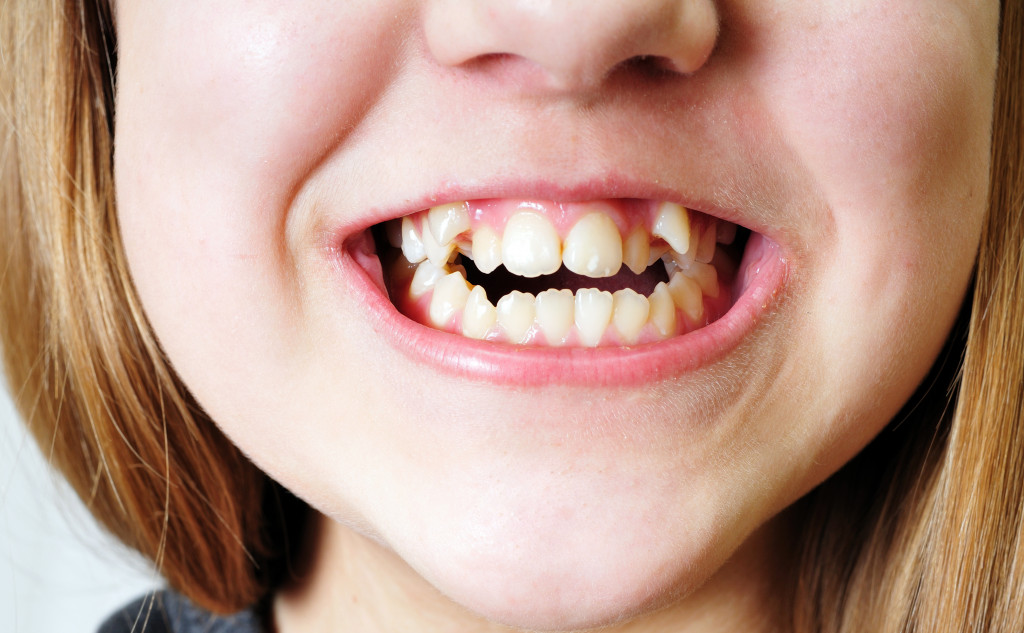It’s not uncommon to have crooked teeth; millions of people have them. Sadly, crooked teeth can cause self-esteem problems and can lead to other oral health issues.
But what causes crooked teeth, and what are the risk factors associated with this dental issue? Understanding the underlying causes of crooked teeth is essential for proper diagnosis and treatment. Here’s a brief look at why crooked teeth happen and some solutions you can use to straighten them.
Causes of Crooked Teeth
Several factors can cause crooked teeth. The most common causes include genetics, poor dental hygiene, inadequate orthodontic treatment during childhood, and thumb sucking. Genetics plays a significant role in determining the shape and size of your teeth—some people may be predisposed to having crooked teeth due to their family history.
Poor dental hygiene can also contribute to crooked teeth; if you fail to brush your teeth daily or floss regularly, plaque buildup can cause your gums to recede, resulting in crookedness. Additionally, inadequate orthodontic treatment during childhood may result in crookedness later in life.
Finally, thumb sucking has been linked to crooked teeth development; if you suck your thumb for an extended period during childhood, it can lead to misalignment as your permanent teeth begin to come in.
Risk Factors for Crooked Teeth
Several risk factors can increase the likelihood of crooked teeth, including genetics, health issues, and lifestyle choices. Here are some of them:
Genetics
The biggest contributing factor to crooked teeth is genetics—or how your jaw shape and size are inherited from your parents or grandparents. If you have a narrow or small jaw, or if your adult teeth don’t fit into the current alignment of your jawbones, it could lead to crooked teeth. This is because there isn’t enough room for all your adult teeth in their correct position within the available space in your mouth.
Health Issues
Certain health conditions can also increase the risk of having crooked teeth. These include conditions such as cerebral palsy, cleft lip/palate, Down syndrome, and temporomandibular joint (TMJ) disorder. These can affect how your jaws develop or cause asymmetry between each side of your face, which can contribute to misaligned or crooked teeth.
Additionally, certain medications may weaken your jaw muscles and cause them to be less able to keep your bite aligned properly. Other medical issues can lead to difficulty with speaking and eating normally due to misalignment of the jaws leading to misalignment of the teeth.
Solutions for Crooked Teeth
The exact solution for correcting your crooked teeth depends on the cause and severity of the issue. Of course, the first thing you need to do is visit a dental office so that your dentist can evaluate your mouth and determine the best course of action. Options for fixing crooked teeth include the following:
Orthodontic Treatments

The most common and effective solution for crooked teeth is orthodontic treatment. Orthodontics involves the use of braces or other appliances to move your teeth into their correct positions over time gradually. Braces involve brackets being attached to your teeth and connected with wires, which are regularly tightened to move your teeth into alignment slowly.
Other orthodontic appliances, such as clear aligners or headgear, may also be used depending on the severity of the misalignment. Orthodontic treatments usually take months to years to complete and require regular visits to the orthodontist for adjustments and monitoring.
Dental Bonding
Another option for treating crooked teeth is dental bonding. In this procedure, a dentist applies a composite resin material directly onto the tooth surface and then shapes it into a more desirable form before hardening it with a special light.
Dental bonding is much faster than orthodontics and can often be completed in just one visit; however, it is not as effective at correcting major misalignments and may not last as long as braces or other orthodontic treatments.
Surgery
In some cases, surgery may be necessary if your misaligned teeth cannot be corrected with braces or dental bonding alone. This type of surgery typically involves cutting the gums open in order to access the underlying jawbone structure so that it can be reshaped in order to properly support the new tooth position once healed.
Surgery is usually only recommended as a last resort because it requires extensive healing time and carries a higher risk than other treatment options.
The Bottom Line
Crooked teeth are a very common dental issue faced by millions of people around the world. By understanding the underlying causes, such as genetic predisposition or poor oral hygiene practices, you can better prepare yourself for proper diagnosis and treatment solutions that work best for you. Whether you need braces or more intensive treatments like jaw surgery will depend on the severity of your misalignment, but regardless, it’s important to speak with a professional orthodontist about possible solutions so you can get back on track toward having a healthy smile!


